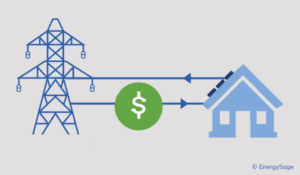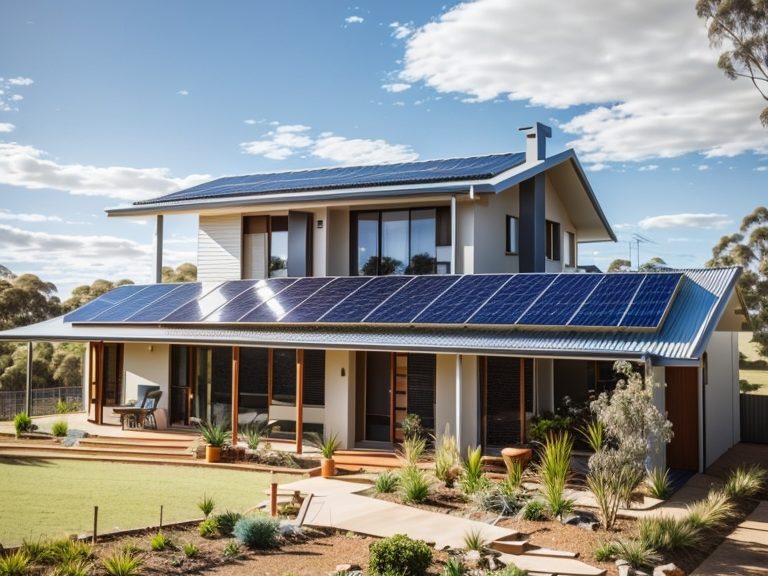State Solar Feed-In Tariffs
State and Territory governments across Australia have adopted different approaches to what is normally referred to as a solar feed-in tariff, sometimes known as a solar bonus scheme or solar buy-back scheme.
Solar feed-in tariffs are a payment for the clean energy that your solar panels feed back into the grid. There have been many changes to feed-in tariff legislation in all states and territories over the past few years. (For an overview of the current incentives offered see our summary table below.)
Although the premium tariffs are no longer in place, low solar PV system prices mean that they are no longer as important as they once were for solar to make financial sense. Increasing electricity costs are now the main reason to invest in a solar PV system, as it offers home owners a means of taking control of their energy bills (read more about ‘solar self-consumption‘).
Compare solar quotes from up to 7 local installers now.
Available Feed-In Tariff schemes
The solar feed-in tariff schemes that are currently available in Australia are ‘net’ schemes. A net feed-in tariff rewards you for each unit of solar power that you have exported to the electrical grid, in excess of what you manage to use yourself.
In addition to varying rates, each network has its own rules for connecting solar systems, with limits on certain system sizes. You can see an overview of these limits in our article about system size limits by electricity network, which contains a state-by-state table.
The following table summarises the current status of solar feed-in tariffs across the states and territories of Australia – it is relevant for households thinking about going solar today. For information on historic rates, please see this article.
Current solar feed-in schemes by state
| State | Current scheme(s) | Max Size | Rate Paid | Further info |
|---|---|---|---|---|
| VIC | Two types of government-mandated feed-in tariff from 1 January 2024:
| Up to 100kW | Depends on retailer, but current minimum rates start at 4.9c/kWh (see ‘Current Schemes’ column) | Victoria Energy Compare (Government site for comparing electricity and solar rates) Solar power info: Melbourne & Victoria |
| SA | No mandatory minimum; customers can search around for competitive rates | 10kVA – approx 10kW – per phase (most households are single phase), or 30kVA total | Depends on retailer: Currently ~5-12c/kWh | Energy Made Easy (Government site for comparing electricity and solar rates) Solar power info: Adelaide & South Australia |
| ACT | No mandatory minimum; customers can search around for competitive rates | 5kW for single phase connections, 30kW for 3-phase connections | Depends on retailer: Currently ~5-12c/kWh | Solar power info: Canberra & the ACT |
| TAS | No mandatory minimum; customers can search around for competitive rates (but currently little competition in the state) | 10kW (single phase), 30kW (three phase) | ~7¢/kWh | Energy Made Easy (Government site for comparing electricity and solar rates) Solar power info: Hobart & Tasmania |
| NT | Solar Buyback scheme through PowerWater | Systems up to 5kW (single phase) and 7kW (3-phase) can be connected without inspection, buyback for systems over 30kVA will be calculated upon application | Domestic buyback rate set by PowerWater – currently 8.3c/kWh | PowerWater: Photovoltaic (PV) solar systems Solar power info: Darwin & NT |
| WA | Different programs for each of the state’s two electricity network regions (Western Power & Horizon Power) | Southwestern region (Western Power network): 10kW (single phase), 30kW (three phase) Rest of state (Horizon Power network): Limits & benefits vary dramatically by locality | Varied rates for Horizon customers (Read more) Synergy residential customers: ~7.2c/kWh | Horizon Power: Renewable energy hosting capacity by town Solar power info: Perth & WA |
| QLD | No minimum feed-in tariff rate for residential customers in southeastern QLD (rates depend on retailer competition) Mandatory minimum for regional QLD customers (determined annually) | Energex network (southeast QLD): 5kW for single phase, 15kW for 3-phase Ergon network (regional QLD): 10kW for single phase, 30kW for 3-phase | Energex network: Depends on retailer – currently about 5-15c/kWh | Energy Made Easy (Government site for comparing electricity and solar rates – for SE QLD) Solar power info: Brisbane & QLD |
| NSW | No mandatory minimum; customers can search around for competitive rates | Depends on network, but generally 5kW for single phase and 30kW for 3-phase | Depends on retailer: Currently about 5-15c/kWh | Energy Made Easy (Government site for comparing electricity and solar buyback rates) articles about solar power in NSW |
FAQs
How does the solar feed-in tariff work?
The current solar feed-in tariff system works by providing payments to solar system owners for selling power back to the grid. For example, if a solar system owner produces 10 kWh from their solar panels and only uses 5 kWh in their home, then 5 kWh can be sold back to the grid for a solar feed in tariff.
How is the solar feed-in tariff calculated?
The calculations for solar feed-in tariffs differ from state to state. For example, while the Independent Pricing and Regulatory Tribunal releases a guideline for solar tariffs in NSW, exact calculations and payments are up to individual retailers. Though the same is true elsewhere, the Victorian government sets minimum solar feed-in tariffs in VIC that are subject to regular change.
Is the solar feed-in tariff taxable?
That will depend on the nature of the solar PV system adoption. While there is no specific legislation around the taxation of solar feed-in tariffs, if you can reasonably demonstrate that you do not intend to make a profit from your system, it is possible to avoid having your tariff receipts fall under the category of taxable income. That is the case for most households whose solar systems are generally designed to lower their power bills. Because this is not a blanket rule and legislation is still behind, it is best to speak to your accountant or contact the ATO directly to monitor any changes and seek an answer for your specific use case.
What is a good solar feed-in tariff?
Solar feed-in tariffs vary from state to state, so it’s important to examine their key differences to find the best one in your area.
A good rule of thumb is to avoid tariffs that seem too good to be true. Some retailers often heavily advertise high solar feed-in tariffs, hoping to draw in customers, only to charge high electricity purchase rates. It’s best to shop around and focus on specific energy rates.
Ultimately, the most important factor in deciding on the best feed-in tariff is location. Depending on your state, you’ll have access to various retailers that offer different deals. For example, the best solar feed-in tariffs in SA will differ greatly from the best solar feed-in tariffs in QLD. Browse our blog to find updated lists on the best solar feed-in tariffs comparisons by state.
Why have solar feed-in tariffs dropped over time?
Initially the government subsidised very high feed in rates to help kickstart the industry. Once the solar market took off, most of those ‘premium’ feed-in tariff offers were removed.
Since then the rates of feed in tariffs have been primarily set by electricity retailers. As the cost of power on the wholesale market in the middle of the day has been getting cheaper with millions of solar systems now installed across Australia, the price that electricity retailers are willing to offer customers has also declined.. However, solar panel adoption is still very much worth it, especially considering the affordable prices we compare. Contact us to learn more.
Are solar feed-in tariffs ending?
No. Though solar feed-in tariffs have indeed declined over the years, they’re still very available from most retailers. In the past, a premium feed-in tariff system was in place to account for the high cost of solar PV systems – this system has now been phased out. The remaining solar feed in tariff offers are determined by the electricity retailers and the wholesale costs of power in Australia.
Further reading of best solar feed-in tariff by state:
Since 2008 our knowledge and sophisticated software has allowed over 300,000 Australian households and businesses to make a well-informed choice on their solar & battery installer.
- Solar Panel Costs: Solar Choice Price Index | April 2025 - 1 April, 2025
- Solar Panels For Homes – All You Need to Know About Solar Systems - 18 March, 2025
- Best NSW Solar Feed-In Tariffs - 17 March, 2025
Related Posts
- Best NSW Solar Feed-In Tariffs (31 Mar, 2025)
- Best SA Solar Feed-In Tariffs (31 Mar, 2025)
- 10 Cheapest Electricity Providers in Brisbane (30 Nov, 2024)
